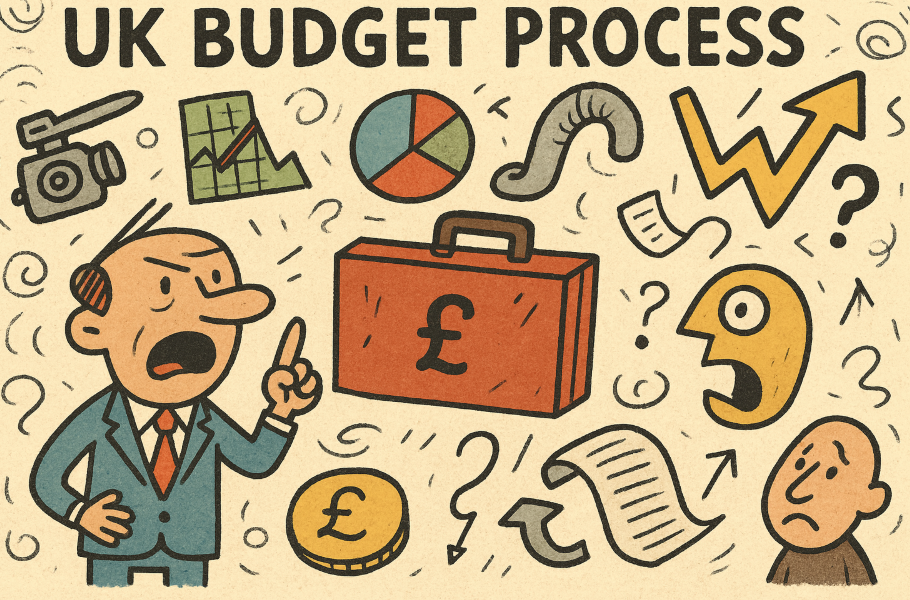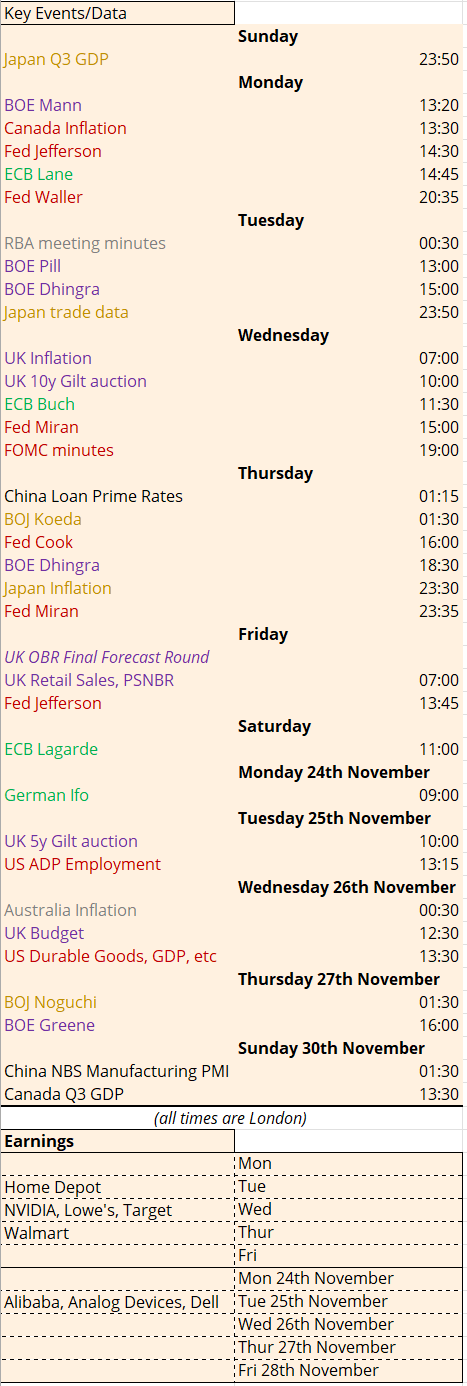
The Two Weeks That Will Be

The final two weeks before Trump returns. Except, he’s already back, isn’t he? In many ways these are the most powerful moments for an incoming US President as the courtiers muscle their way towards the new King and his enemies do deals in the shadows to avoid upcoming sanction, all without the leader having to do anything.
The changing of the guard is even more chaotic than usual as many appear unprepared for the Return of the King. It just doesn’t happen very often: only one other US President has ever come back for a second non-consecutive term (Grover Cleveland, 22nd and 24th president in 1885-89 and 1893-97). This time, in the age of social media, the Trump reign has already begun. At any moment a tweet from him or his lieutenants become the 99 call, players scrambling in the mud of the Washington swamp to gain advantage. The Florida swamp is the provenance of many of those now in the inner circle, what with proximity to the ancestral Mar-a-Lago home of DJT ensuring patronage from the new realtor monarch.
And so while we wait for those tariffs to be signed by executive order on Day One, followed by peace in Ukraine, mass deportations and President Xi waving from the Capitol (or at least one of his plenipotentiaries), the markets must decide what to do with the decidedly rear-view mirror US data. Even payrolls, released Friday, is less useful than it would be given the big number comes next month when the benchmark revisions for the prior year are updated.
More relevant will be pronouncements from FOMC members. They have been part of the chaotic running from one side of the boat to the other – dovish for almost a year until the US election, then flipping hawkish. To be fair to them, they had to wait until the Republican clean sweep emerged before incorporating it into their forecasts. We will find out more with the FOMC Minutes on Wednesday; then Fed’s Cook speaks Monday, Waller on Wednesday and Bowman on Thursday.
It’s not just central bankers, global terrorists and DC residents adjusting to the new era. Markets have decided DJT 2.0 is mostly great news for risky assets with volatility lower and the S&P500 higher. Investors have decided they’re due a repeat of the rally that greeted his first term and FOMO has pushed them to go all-in:

It doesn’t matter for now that this term is accompanied by dramatically higher inflation and interest rates and an entirely different post-pandemic economy. Who cares the 30 year yield is more like 5% than the 3% that greeted Trump eight years ago when Tesla has gone up by two thirds since election day? Bring on the Fartcoin!
Europe can only dream of such euphoria. Neither France nor Germany has a functioning government and won’t for some time to come. In a warning sign of what is to come when you ignore the far-right, Austria’s attempts to build a coalition have fallen apart. It would have been the first three party coalition since 1947 but it failed at the final furlong. The main parties had refused to work with the far-right FPO who gained the most seats in September’s election with 29% of the vote. The FPO are now polling at 36% suggesting that fresh elections would force their involvement in government. Fragmented electorates everywhere mean that centrist parties don’t have the mandate to govern.
The ECB is doing its best to step into the void, gunning for rate cuts. German data should provide them with yet more grist to the dovish mill: inflation is out on Monday and full year GDP data will likely once again show yet another contraction in the German economy when it’s released on Wednesday 15th January.
The Bank of England can only dream of such clarity of purpose. They’d love to cut rates due to softening growth but have rather stickier inflation to deal with. The latest print comes out on Wednesday 15th January – on the same day we hear from the newest MPC member, and the first appointed under Chancellor Reeves, Alan Taylor. He has voted for a cut at two of his three meetings so far. We will find out just how much of a dove he is.
The UK government will be hoping a few more MPC members join him. There’s unlikely to be good news for Starmer & Reeves from GDP data on Thursday 16th January and Retail Sales for the key Christmas period on Friday 17th January. Not that good news will bear much fruit. Starmer’s approval rating is fast approaching the point of no return. As political scientist Rob Ford has pointed out, only John Major in the wake of the ERM crisis had a more precipitous plummet for a government in polling numbers in the first six months of government:

As Rob puts it: ‘Labour won a landslide on the back of the lowest ever winning vote share, in an election with the second lowest ever turnout. As a result, only two in every 10 eligible voters cast a ballot for Starmer’s Labour… Big election victories usually mean a substantial cohort of voters is invested in the new government’s success. Not this time.’
With so many frustrated voters, the media is incentivised to play to their concerns. More eyeballs will look at stories that undermine the government than support it. Starmer needs to gamble. Except he has no chips: Rachel already placed them all on the green baize in October. She doesn’t even have a credit card to offer the house. She announced before Christmas that the OBR would deliver their updated fiscal forecast on 26th March 2025 but alongside this she will only deliver ‘a parliamentary statement’. Her dogged determination to avoid becoming Kwasi Kwarteng leaves Starmer perilously close to becoming Rishi Sunak: an out-of-touch technocrat with few sales skills who hopes quiet competence can win the day. At some stage, the next Labour prime minister will wield the knife, using rioting peasants, unrest at the court, and an unholy unification of enemies on both left and right to defenestrate Starmer.
Back in the real world, earnings season kicks in. Tesco reports on Thursday, then JP Morgan and other banks from Wednesday 15th January. BlackRock also reports that day and we will be watching to see if their AUM soars to ever more dizzying heights even as their net income remains static:

All of the FOMO comes with its own risks. Two ETFs that track the bitcoin juggernaut Microstrategy have seen increased tracking error since Trump’s victory and concomitant crypto meme mania:


The sheer scale of the inflows required prime brokers to write total return swaps in size – and they couldn’t and/or wouldn’t. The ETF then has to turn to call options which don’t track the performance of Microstrategy as closely. This sounds very niche and is certainly exacerbated by trying to use a leveraged ETF to track the performance of a company which is itself leveraged to the performance of bitcoin. But it gets to the heart of the issue for an ETF: by tracking something else, the provider of the fund must be able to hedge the tracking risk. The liquidity-fuelled last few years have created an expectation that hedging is always and everywhere possible. It isn’t.
The Bank of England released the results of its System Wide Exploratory Scenario (SWES) at the end of November. This was a massive exercise undertaken over a year by banks, hedge funds, asset managers, pension funds et al which forced them all to respond to a shock scenario. It revealed that non-bank financial institutions ‘expected they would be able to access additional repo that is unlikely to be available‘ and that ‘The sterling corporate bond market could face a ‘jump to illiquidity’’.
In other words, not everyone gets out of the crowded theatre unscathed when someone shouts fire. And the masses are all crammed in with their popcorn to watch the Trump sequel opening at the box office on 20th January.



